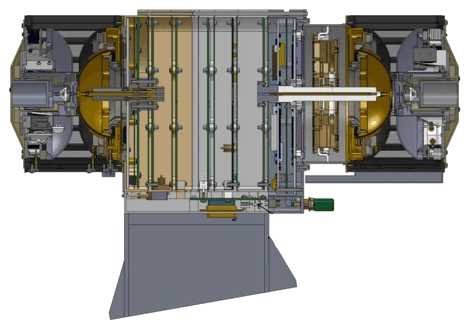Solar activity can give us the northern and southern lights; it can also interfere with infrastructure on the ground and in space; and understanding solar activity is critical to protecting astronauts.
The Solar Probe Analyzer for Ions (SPAN-I) is an electrostatic analyzer with a time-of-flight mass spectrometer designed by the Berkeley Space Sciences Lab to measure the ion composition and distribution function of the thermal corona and solar wind plasma (Livi, et al. 2022. 10.3847/1538-4357/ac93f5). At the highest level, SPAN-I's goal is to improve our nowcasting and forecasting abilities for space weather.

My role is designing the sensor frontend ASIC for the mass spectrometer. The underlying architecture is a modification of traditional constant fraction discrimination (CFD) to guarantee a known and consistent trigger fraction irrespective of pulse shape, as well as relax timing constraints on analog delay blocks which sit at the heart of the pulse shaping.
We taped out once in 2021 and once more in 2022, with both chips' schematic design assisted the Berkeley Analog Generator 2.0 (Chang et al. 2018. 10.1109/CICC.2018.8357061). If all goes well, these chips will be flying to Mars with ESCAPADE!

Photo courtesy of Alexander Alvara.
These are just the people who have been directly involved with ASIC design and test; SPAN-I is a much larger meta-project!- Mia Mirkovic (University of Michigan, SPRL)
- Artun Dalyan (11Sight)
- Peter Peng (Masters student at Columbia University)